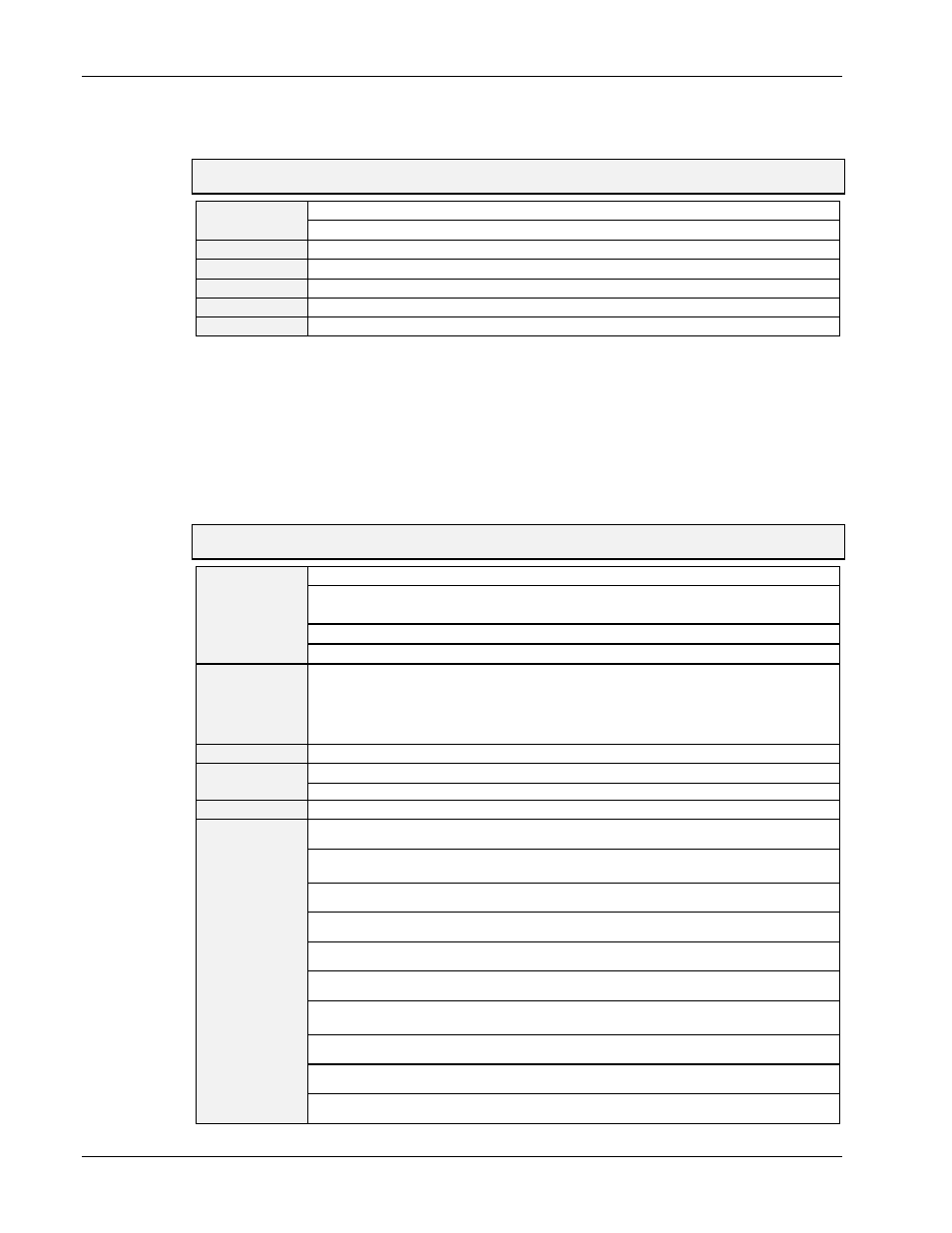Dma channel, Enter (controller mode) – Measurement Computing Personal488 rev.3.0 For DOS & Windows 3.Xi User Manual
Page 303

15A. Driver488/DRV Commands
III. COMMAND REFERENCES - 15. Command References
III-288
Personal488 User’s Manual, Rev. 3.0
can still check for the conditions by using the
STATUS
command. If the
DISARM
command is invoked
without specifying any interrupts, then all interrupts are disabled. The
ARM
command may be used to
re-enable interrupt detection.
DMA CHANNEL
SYNTAX
DMA CHANNEL {channel|NONE}
channel
is the DMA channel to be used by the I/O adapter.
RESPONSE
None
MODE
Any
BUS STATES
None
SEE ALSO
INT LEVEL, TIME OUT
EXAMPLE
PRINT#1,”DMA CHANNEL 5”
The
DMA CHANNEL
command specifies which DMA channel, if any, is to be used by the I/O interface
card. The PC has four DMA channels, but channel
0
is used for memory refresh and is not available
for peripheral data transfer. Channel
2
is usually used by the floppy-disk controller and is also
unavailable. Channel
3
is used by the hard disk controller in PCs, but is usually not used in AT
compatible machines. So, channel
1
(and possibly channel
3
) is available for DMA transfers. The AT
compatible computers have three 16-bit DMA channels:
5
,
6
, and
7
. The MP488CT can use these
channels for high speed transfer. The
DMA CHANNEL
value must match the hardware switch settings on
the I/O adapter card.
ENTER (Controller Mode)
SYNTAX
ENTER[addr][;][#count][;][term][term][EOI]
addr
is a device address (primary with optional secondary) or external device
name.
count
is the number of characters to read.
Term
and
EOI
override the normal bus input terminator.
RESPONSE
Device-dependent data. If count is specified, then the exact
count of characters is returned without EOL being
appended. If not, the response ends when the input
terminator is detected and EOL is appended to the returned
data.
MODE
CA
BUS STATES
ATN
•UNL, MLA,TAG, *ATN, data (With addr)
*ATN, data (Without addr)
SEE ALSO
OUTPUT, TERM, EOL, BUFFERED
EXAMPLES
PRINT#1,”ENTER16”
INPUT#2,A$
Read data from device 16
PRINT#1,”ENTER16”LINE
INPUT#2,A$
Read an entire line of data from device 16 even if it
contains commas or other punctuations
PRINT#1,”ENTER16;CR”
INPUT#2,A$
Read data from device 16 until CR is detected
PRINT#1,”ENTER16$000”
INPUT#2,A$
Read data until a NULL is detected
PRINT#1,”ENTER16LFEOI”
INPUT#2,A$
Read data until LF or EOI is detected.
PRINT#1,”ENTER0702
INPUT#2,A$
Read data from device 7
PRINT#1,”ENTER12#5”
A$=INPUT$(5,#2)
Read 5 bytes from device 12. INPUT$ returns 5 bytes from
file #2
PRINT#1,”ENTER#20”
A$=INPUT$(20,#2)
Read 20 more bytes. INPUT$ returns 20 bytes from file #2
PRINT#1,”ENTER DMM”
INPUT#2,VOLTAGE
Read data from device DMM
PRINT#1,”ENTER COM1”
INPUT#2,A$
Read data from device COM1
